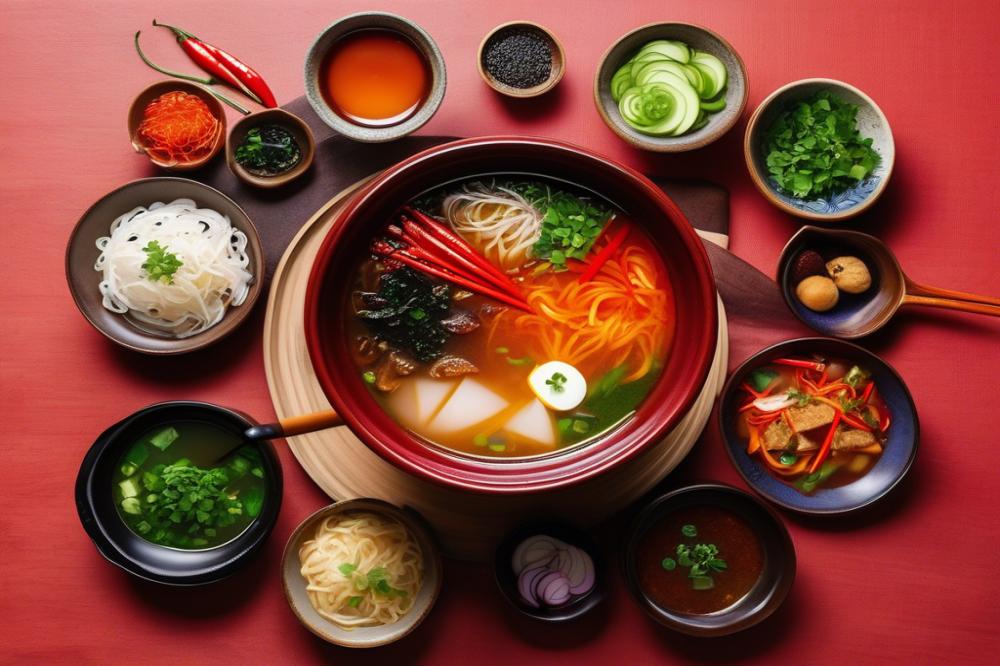Introduction
Haejangguk is a traditional Korean hangover remedy soup that holds a special place in the hearts of many. Known for its soothing qualities, this dish is often consumed after a long night of celebration. In Korean cuisine, it stands out as a beloved comfort food, cherished not only for its restorative properties but also for its delicious flavor.
This spicy soup has a unique flavor profile that adds warmth to your soul. Various ingredients come together to create a nourishing meal, ideal for those looking to recover from a night of indulgence. The combination of broth, vegetables, and proteins makes it a well-rounded soup recipe that pleases the palate and replenishes the body.
Cooking this dish involves simple methods that anyone can follow. Each spoonful provides comfort and revitalization. As the soup simmers, it develops rich flavors that make it all the more enticing. With its hearty components and piquant taste, Haejangguk is not just a remedy but also a cultural treasure in the world of Korean cooking.
What is Haejangguk?
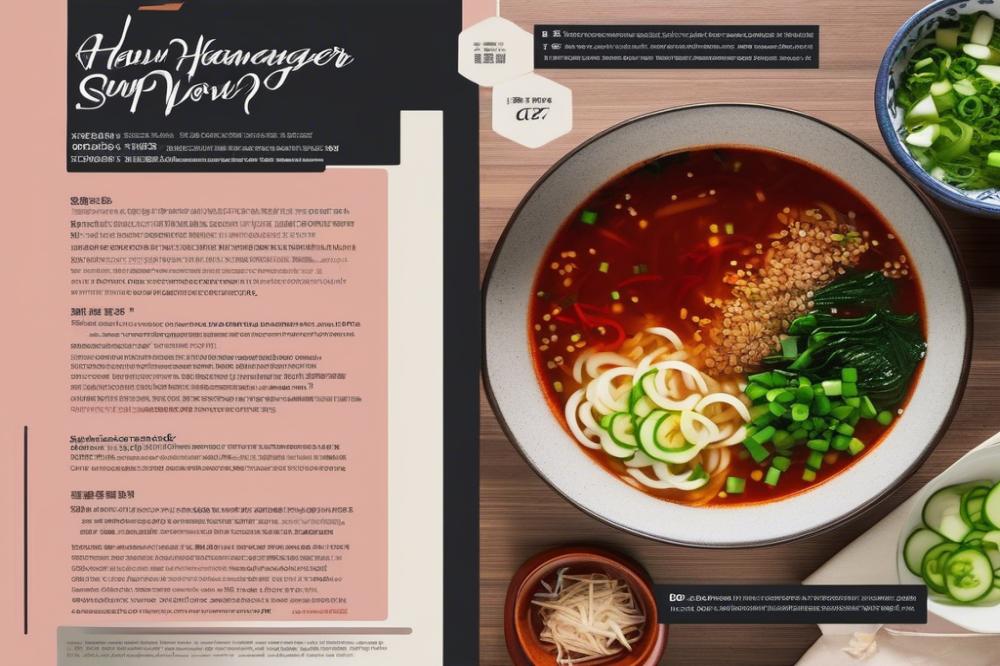

Haejangguk is a traditional Korean soup that holds a special place in the hearts of many. Its origins trace back to Korea’s rich culinary history. People often associate this dish with a remedy for hangovers. This connection to alcohol may stem from the vibrant nightlife in Korean culture. After a night out with friends, many seek comfort in a warm bowl of this spicy soup.
Over the years, Haejangguk has evolved in both its preparation and ingredients. Originally, it included simple components like beef broth, vegetables, and spices. As Korean cuisine spread and adapted, variations started to emerge. Now, some recipes might feature ingredients such as perishables or fermented products. This evolution showcases how the dish reflects local tastes while remaining a beloved comfort food.
Cultural anecdotes about this dish are plentiful. Many young people can recall their parents or grandparents recommending it after a night of indulgence. Sharing a bowl often brings people together, making it more than just a soup recipe. It embodies a sense of community, often enjoyed during gatherings or celebrations.
The cooking method varies but usually involves simmering the broth to enhance its flavors. Spicy components like gochugaru (red pepper flakes) are typical additions. This ingredient gives it that signature heat. In addition, most variations include a mix of leafy greens, typically including napa cabbage or other vegetables. Each ingredient plays a role in balancing the flavors and providing nourishment. For those who need a quick recipe to shake off the effects of a night out, Haejangguk serves as a go-to option.
Enjoying Haejangguk is more than just filling one’s stomach. It connects individuals to their culture and traditions through food. Learning about its history can deepen appreciation for each spoonful. This dish not only soothes the body but also nurtures the spirit. Every bowl tells a story of resilience and care, a perfect blend of comfort and culture.
Ingredients List and Nutritional Information
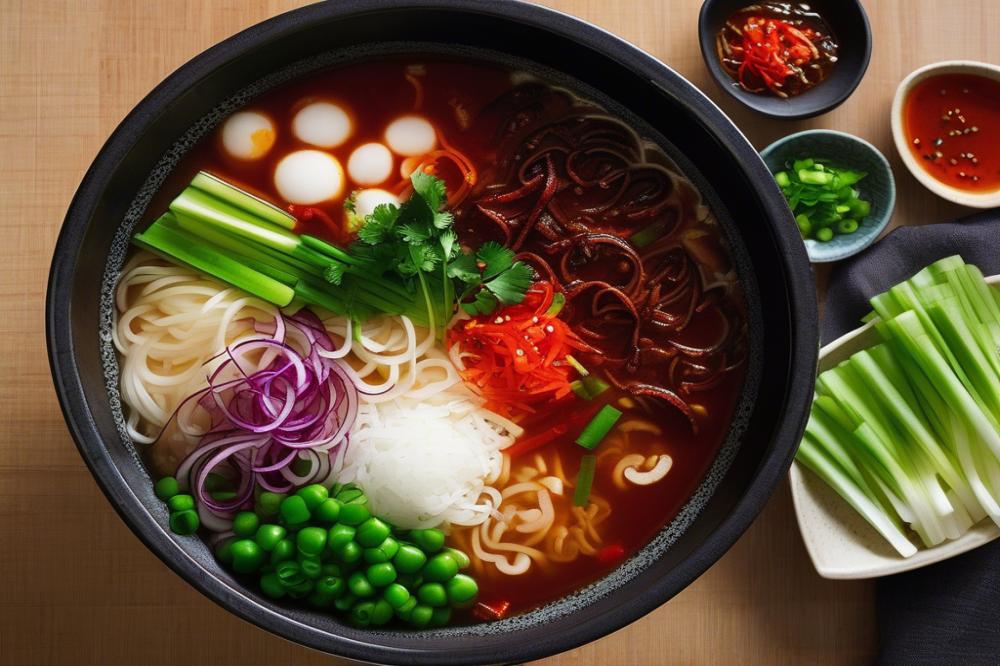

Preparing the perfect hangover remedy begins with the right combination of ingredients. For a classic Korean cuisine experience, gather the following items for the soup recipe:
- 300g beef brisket: This meat adds rich flavor to the broth.
- 200g napa cabbage: Dark green leaves enhance both taste and nutrition.
- 100g bean sprouts: These crunchy vegetables bring texture to the dish.
- 100g radish: Fresh radish provides a slightly peppery note.
- 2 tablespoons gochugaru: Spicy Korean red pepper flakes are essential for heat.
- 1 tablespoon doenjang: The fermented soybean paste gives depth to the flavor.
- 4 cloves garlic, minced: Garlic is a must-have for any savory dish.
- 1 onion, sliced: Sliced onion contributes sweetness to the broth.
- 6 cups water or beef broth: Either option creates a hearty soup base.
- 2 green onions, chopped for garnish: These add a fresh touch at the end.
- Salt and pepper: Season to taste for a satisfying experience.
This traditional dish not only serves as comfort food but also provides vital nutrients. Here’s a look at the nutritional information for each serving, based on approximately two servings:
- Calories: 400
- Protein: 25g
- Carbohydrates: 20g
- Fiber: 5g
- Fat: 25g
- Sodium: 600mg
This spicy soup offers a delightful balance of flavors and nutrients. Enjoying Haejangguk can truly uplift your spirit and help recover after a long night. This quick recipe is perfect for those seeking comfort and nourishment in a bowl.
Cooking Method
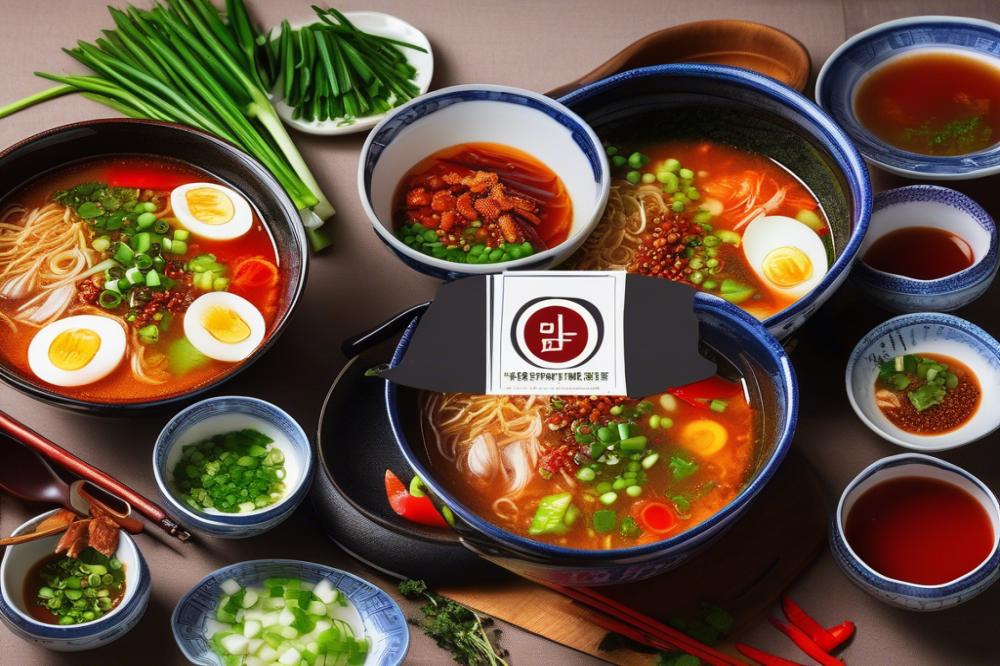

Preparing Haejangguk is a rewarding experience. First, gather your ingredients. You will need beef, radish, tofu, and various vegetables. Common vegetables include green onions and napa cabbage. Don’t forget chili pepper flakes, fermented soybeans, and garlic. These enhance the flavor tremendously. A quick visit to a Korean market will help you find all the necessities.
Start with the broth. In a large pot, add water and beef bones to create a rich base. Bring it to a boil, then reduce to a simmer. Cooking the broth for at least an hour maximizes the flavor. Skim off any foam that forms on top. This keeps the soup clear and improves the taste.
After the broth is ready, it’s time to add the ingredients. Dice the radish into thin pieces, as they will cook quickly. Slice the beef into bite-sized chunks. Add both the radish and beef to the pot. Let them cook for about 15 minutes. This will make the meat tender and allow the radish to soften.
Next, incorporate the tofu. Cut it into cubes and gently add it to the pot. Tofu adds a creamy texture to this spicy soup. Mix in the fermented soybeans and chili pepper flakes, adjusting the amount based on your spice preference. Feel free to include more vegetables like napa cabbage if you desire! Let everything simmer together for another 10 minutes.
For the finishing touches, chop the green onions. Just before serving, stir in the green onions for a fresh taste. Season the soup with salt and pepper according to your liking. Serve the Haejangguk hot in a bowl. It makes for great comfort food on cold days or after a long night out.
Remember, cooking this traditional dish offers room for creativity. You can add mushrooms or even an egg for extra richness. Finding your perfect combination will create a unique hangover remedy everyone loves. Enjoy your cooking adventure!
Variations of Haejangguk
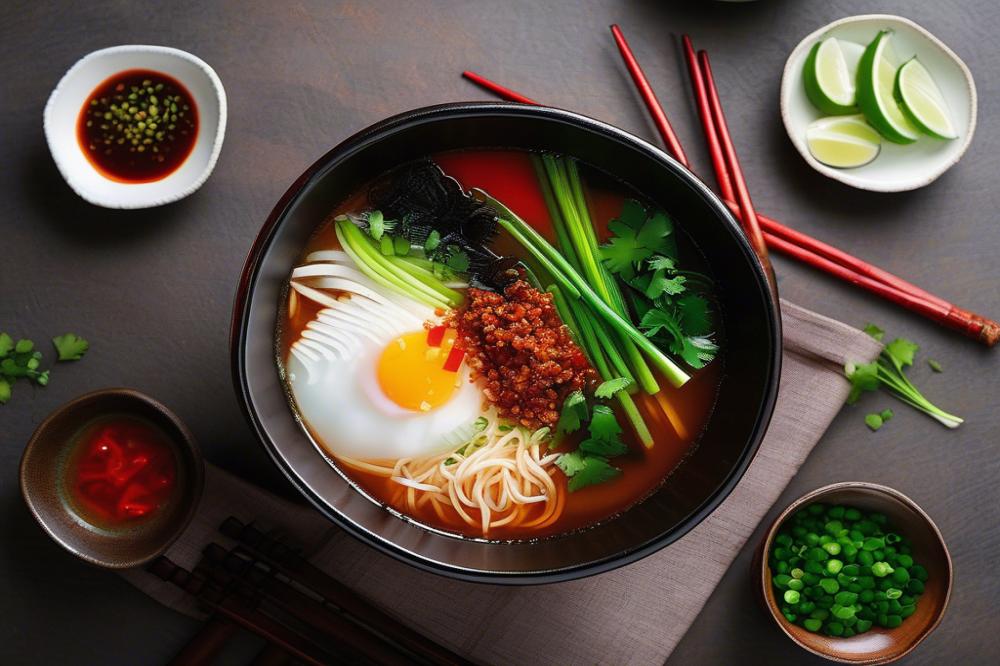

This traditional dish has many regional variations. Each area of Korea adds its own twist to the hangover remedy. Ingredients can dramatically shift, influencing the flavor and experience of the soup.
Certain regions prefer different proteins. For instance, some may choose beef, while others use pork. Seafood is also an option that offers a completely distinct taste. This adaptability makes it a beloved soup recipe among many.
Spice levels can vary widely. Some love a fiery kick, adding red pepper flakes or hot sauce. Others might prefer a milder broth, focusing on the rich flavors of the vegetables and meat. Adjusting the spice allows for personal taste preferences.
The cooking method can change too. In some families, the dish is simmered slowly, enhancing the broth’s depth. In contrast, a quicker recipe might be favored by those with less time. The results are still delicious, showcasing Korean cuisine’s versatility.
Various ingredients can elevate the flavor profile. Green onions, garlic, and cabbage are frequent additions. Some recipes might even include tofu, for an extra protein boost. This allows for a comforting meal that appeals to different palates.
Experimenting with different flavors can lead to delightful discoveries. A hint of sesame oil or a splash of vinegar can create exciting new layers in the soup. Each batch can become a unique experience.
Ultimately, it’s about what resonates with you. Have fun with the process of making this spicy soup. It can quickly become a cherished go-to whenever you need a remedy after a long night.
Pairing Haejangguk
Enjoying Haejangguk can be a delightful experience, especially when you know what to serve alongside it. Traditional Korean cuisine offers many side dishes that enhance the warm comfort of this hangover remedy. A selection of banchan, or side dishes, can complement the flavors beautifully.
Kimchi is a classic choice. Its spicy and tangy notes truly balance the flavors of the soup. This fermented cabbage dish adds zest without overpowering the meal. Another excellent option is noyeong, a seasoned seaweed salad. Its lightness pairs well with the rich broth of Haejangguk.
For those who prefer something heartier, consider adding a plate of fried fish or crispy pancakes. These dishes provide contrasting textures that enhance the overall meal. The crispiness of the pancakes mixed with the warmth of the soup can be both satisfying and enjoyable.
When it comes to beverages, traditional Korean drinks can elevate the dining experience. Makgeolli, a lightly sparkling rice wine, is an ideal choice. Its sweetness and smoothness balance the spice of the soup. Alternatively, serve a refreshing citron tea to cleanse the palate while also providing a burst of flavor.
Every ingredient in this meal contributes to a cozy atmosphere. Think about serving pickled vegetables as a tangy side dish, too. They add a crunch and acidity that can brighten up the soup’s richness. The balance of flavors throughout is important to experience the full depth of the meal.
In Korean culture, sharing food is a way to bond. Gather around the table with family or friends for a communal meal. Each bowl of Haejangguk becomes more than a soup recipe; it transforms into a moment to create memories and enjoy good company. Enhancing this traditional dish with thoughtful pairings will certainly enrich your dining experience.
Embrace the Comfort of Haejangguk
Haejangguk is more than just a dish; it embodies the spirit of healing and comfort found within Korean cuisine. This delightful soup serves as a remedy for those tough mornings when you need a pick-me-up after a long night. Bursting with flavor, it offers a combination of nourishing ingredients that can revive the senses.
The rich broth, paired with assorted vegetables and meat, creates a satisfying meal that warms the soul. Its restorative qualities are not only physical but also emotional. Gathering around a pot of steaming soup, sharing stories, and enjoying laughter brings people together, making every bowl a comforting experience.
Trying your hand at this iconic soup recipe can be gratifying. Even if you’re new to cooking, taking part in making this traditional dish can feel rewarding. Recipes are often adaptable, so feel free to explore variations that suit your taste.
Knowing the depth and significance of Haejangguk can inspire anyone to create this beloved meal at home. This soup stands as a staple in Korean culinary tradition, cherished for its deliciousness and heartiness. Give it a try, and discover why it remains a favorite for many. It might just become your new go-to comfort food as well.

